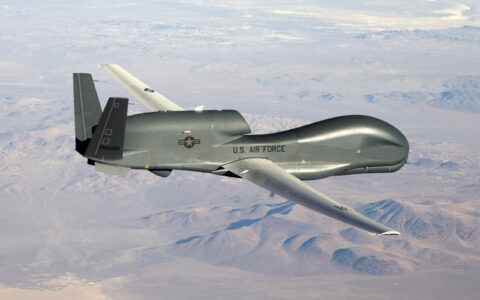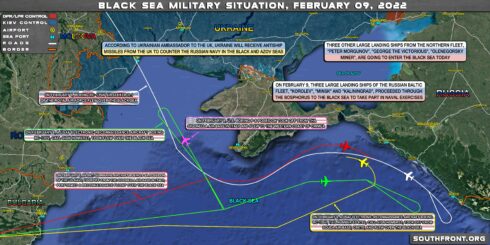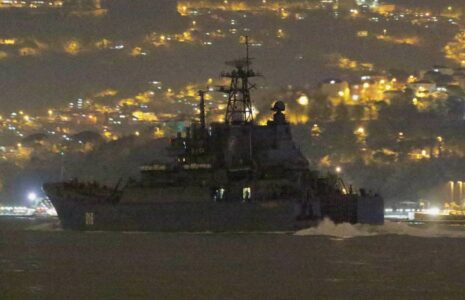Winds of war in the Mediterranean.
Written by Piero Messina
The tension between the United States and Russia continues to rise. For over a week from the Sigonella base, monitoring measures have been activated to follow Russia’s military maneuvers in the Black Sea from the sky. To observe the exercises carried out by the armies of Russia and Belarus, called “Allied Resolve 2022”, NATO sends the drones stationed in the Sicilian base on patrol. From the radar tracks of the specialized sites it is possible to reconstruct the movements of Forte12, a drone of the RQ-4A Global Hawk series. The task of the spy plane is to tail wave after wave the movements of the Russian fleet in the Black Sea.
In the past few weeks, six warships with landing units of the Russian Navy had crossed Gibraltar and after crossing the Sicilian channel they were reunited with other pawns of the naval forces of the Kremlin.
According to the reconstruction of the radar tracks, Forte12 is already on its third mission in the last week. In the night between 9 and 10 February, the US Navy drone and under the NATO contingent based in Sigonella, took off from a point in the Ionian Sea to cross the eastern Mediterranean and then set sail for the Black Sea, before entering the skies of Ukraine. The spy plane mission lasted more than 14 hours.
The RQ-4 Global Hawk (built by Northrop Grumman) is a remotely piloted aircraft (APR) used by the U.S. Air Force as a reconnaissance plane.

An RQ-4 Global Hawk unmanned aircraft like the one shown is currently flying non-military mapping missions over South, Central America and the Caribbean at the request of partner nations in the region. (U.S. Air Force photo/Bobbi Zapka)
The Global Hawk is capable of providing a high resolution Synthetic Aperture Radar (SAR) – which can penetrate through clouds and sandstorms – and a long range electro-optical / infrared (EO / IR) image with ability to stay longer on target area. It can guard nearly 100,000 square kilometers (40,000 square miles) of land by day. To give an example: if a Global Hawk flies out of San Francisco, it is able to operate in Maine for 24 hours, observe a grid of 370 x 370 kilometers (230 x 230 miles) and then be able to return to its home base. The potential uses of the Global Hawk are in the gathering of information both in peacetime and during military operations. According to information provided by the US Air Force, the capabilities of the aircraft allow for precise location of weapons and better protection of forces in the field through superior surveillance capabilities.
The “R” is the US Department of Defense designation for reconnaissance; “Q” instead is used to identify unmanned aircraft. The “4” is the reference to the fourth series of a proposed unmanned aircraft system. Each single Global Hawk, whose projected design cost was approximately $ 35 million, currently costs 131 million and adding up the development costs, it comes to approximately $ 222.7 million for each specimen. This drone model is only a “spy plane” because it’s not particularly effective in warfare scenarios. In June 2019, a drone identical to the one used to spy on Russia’s moves in the Black Sea was shot down by Iran’s air defense.







